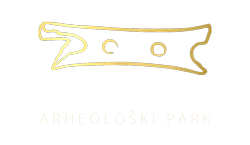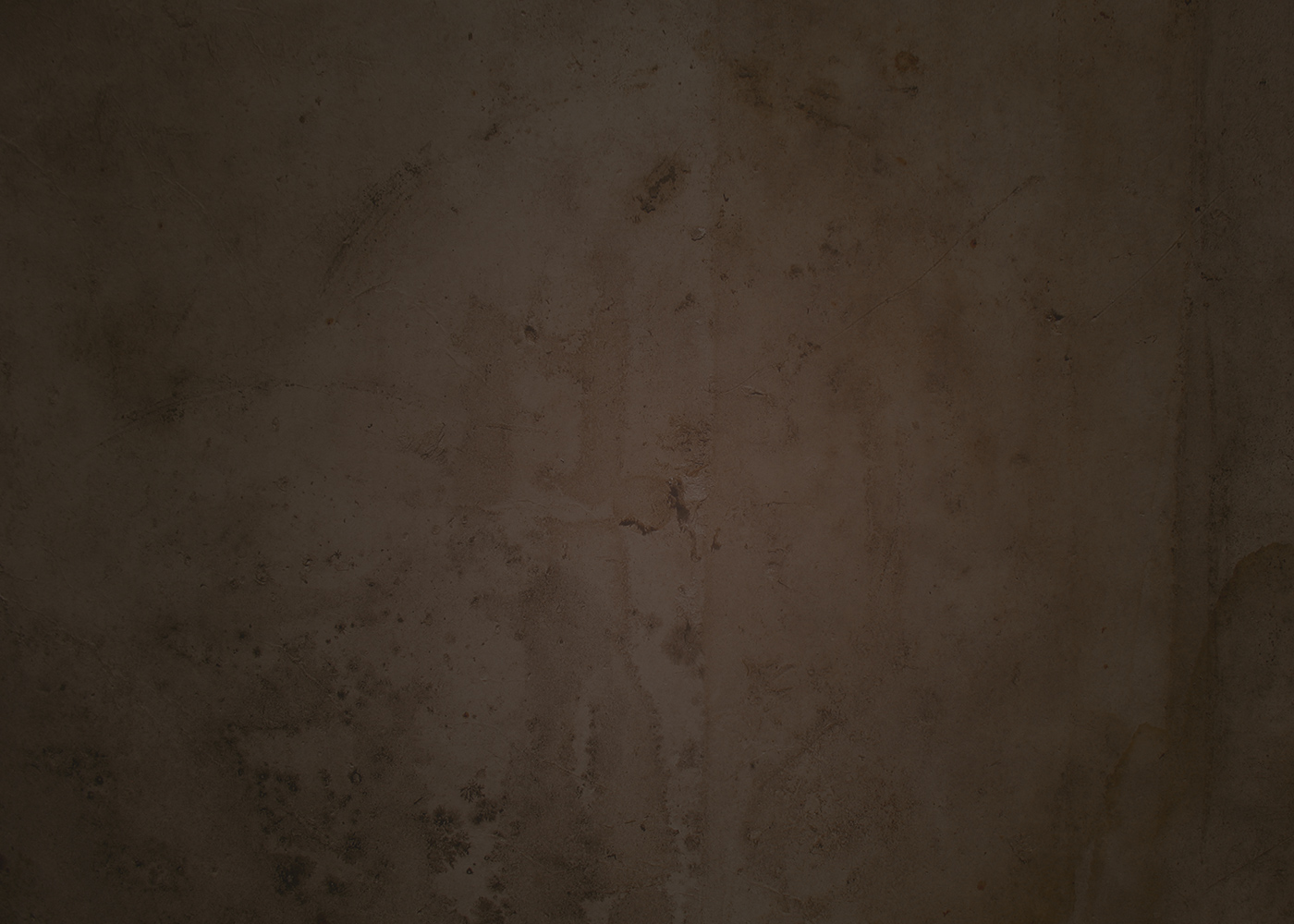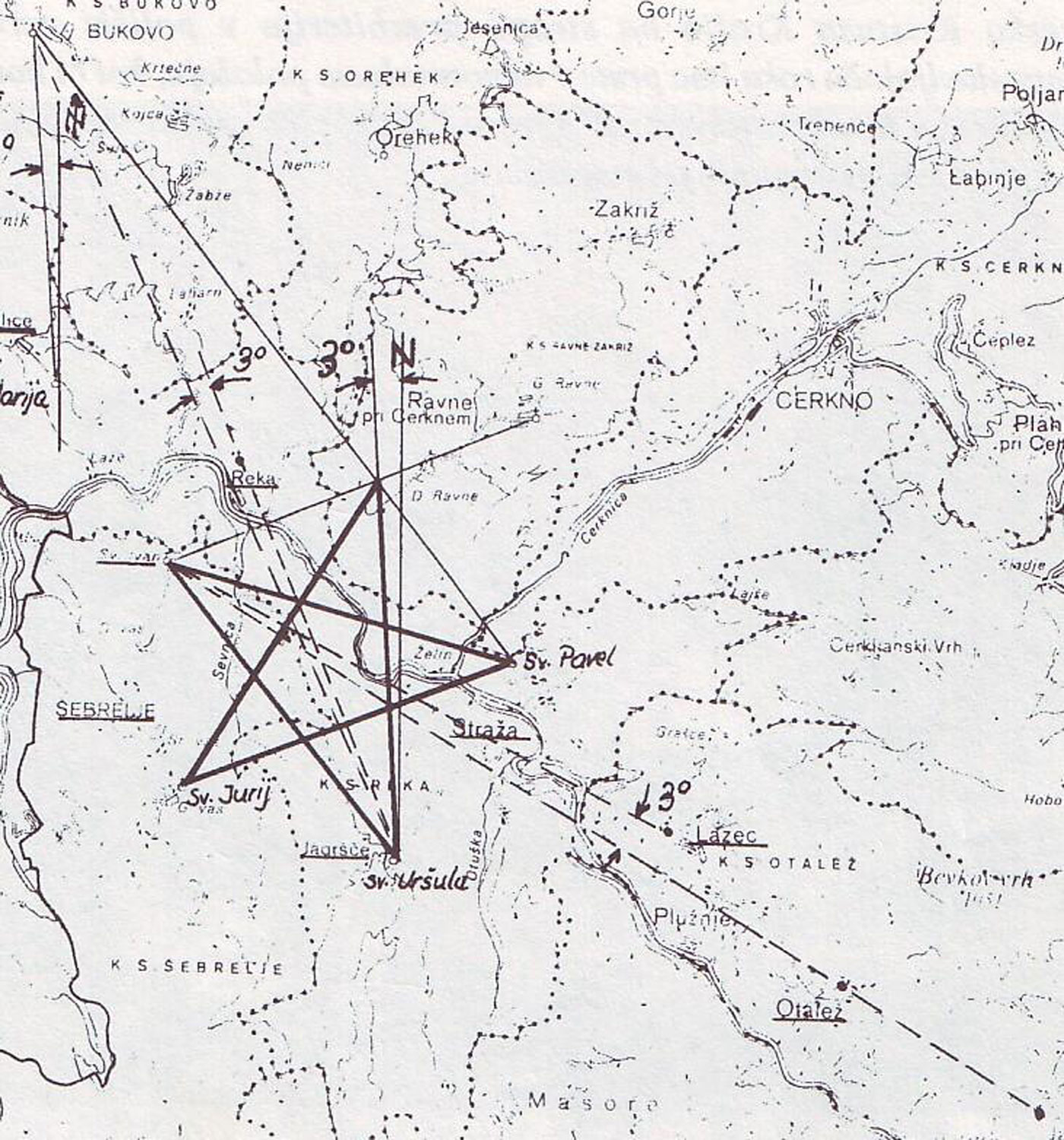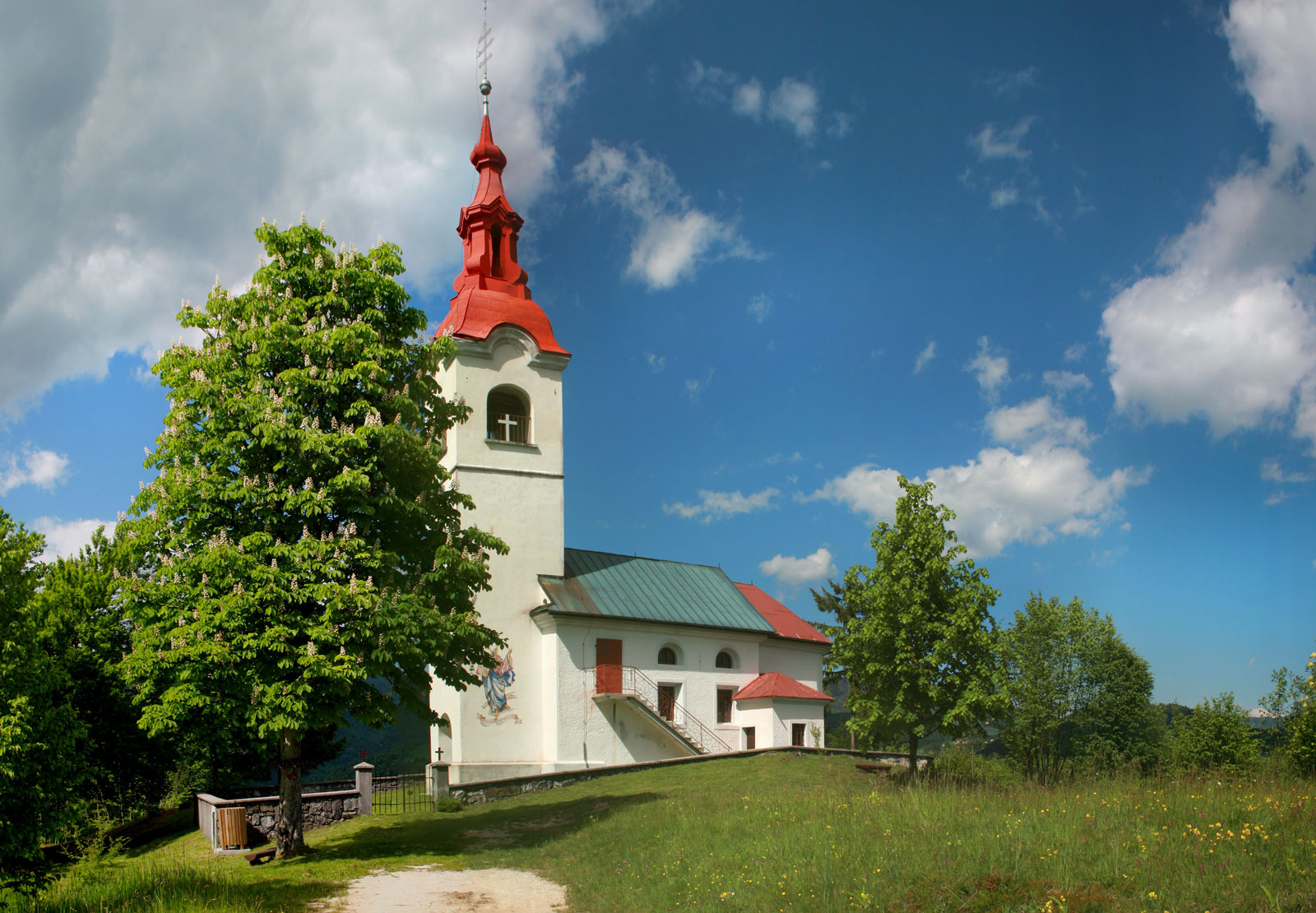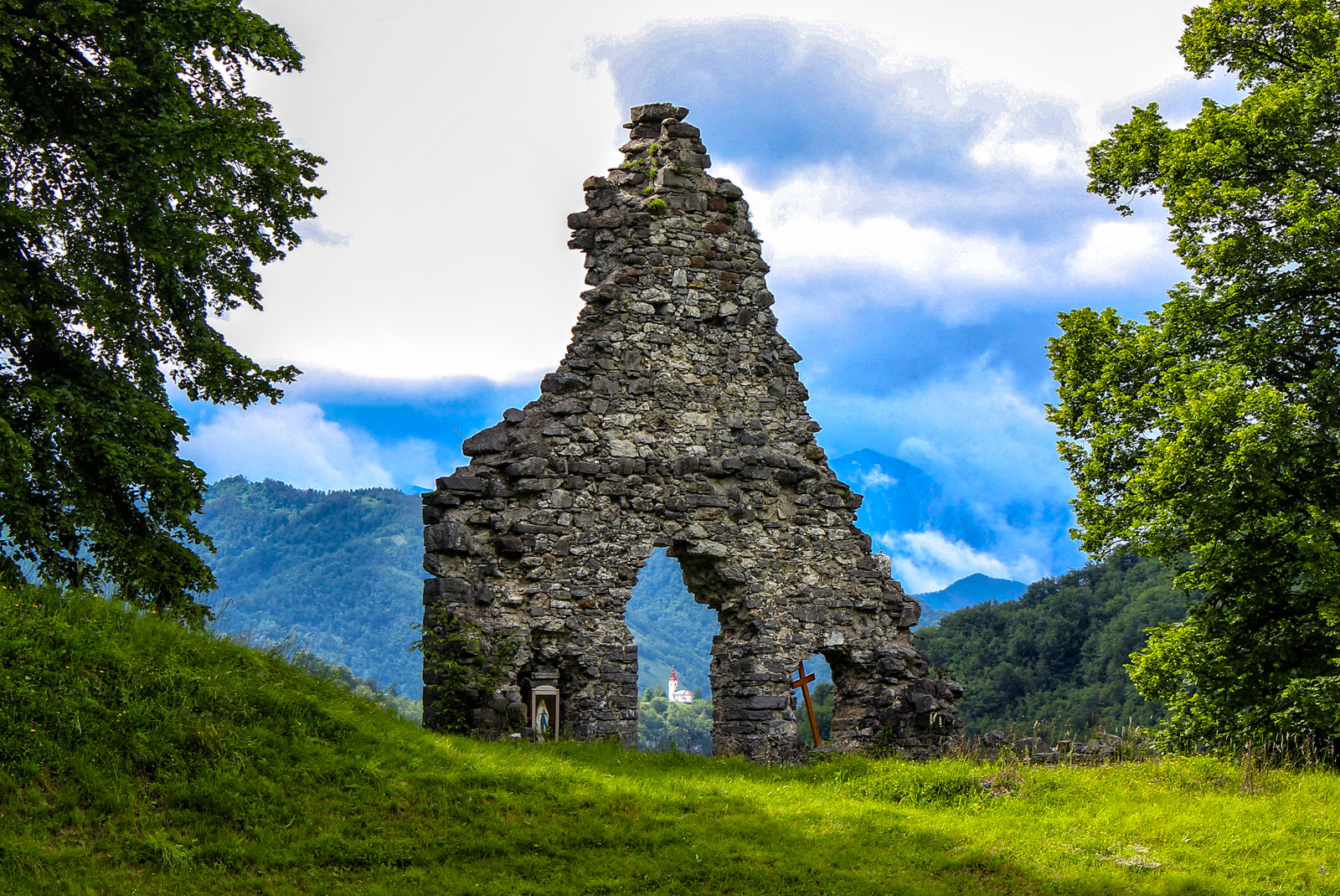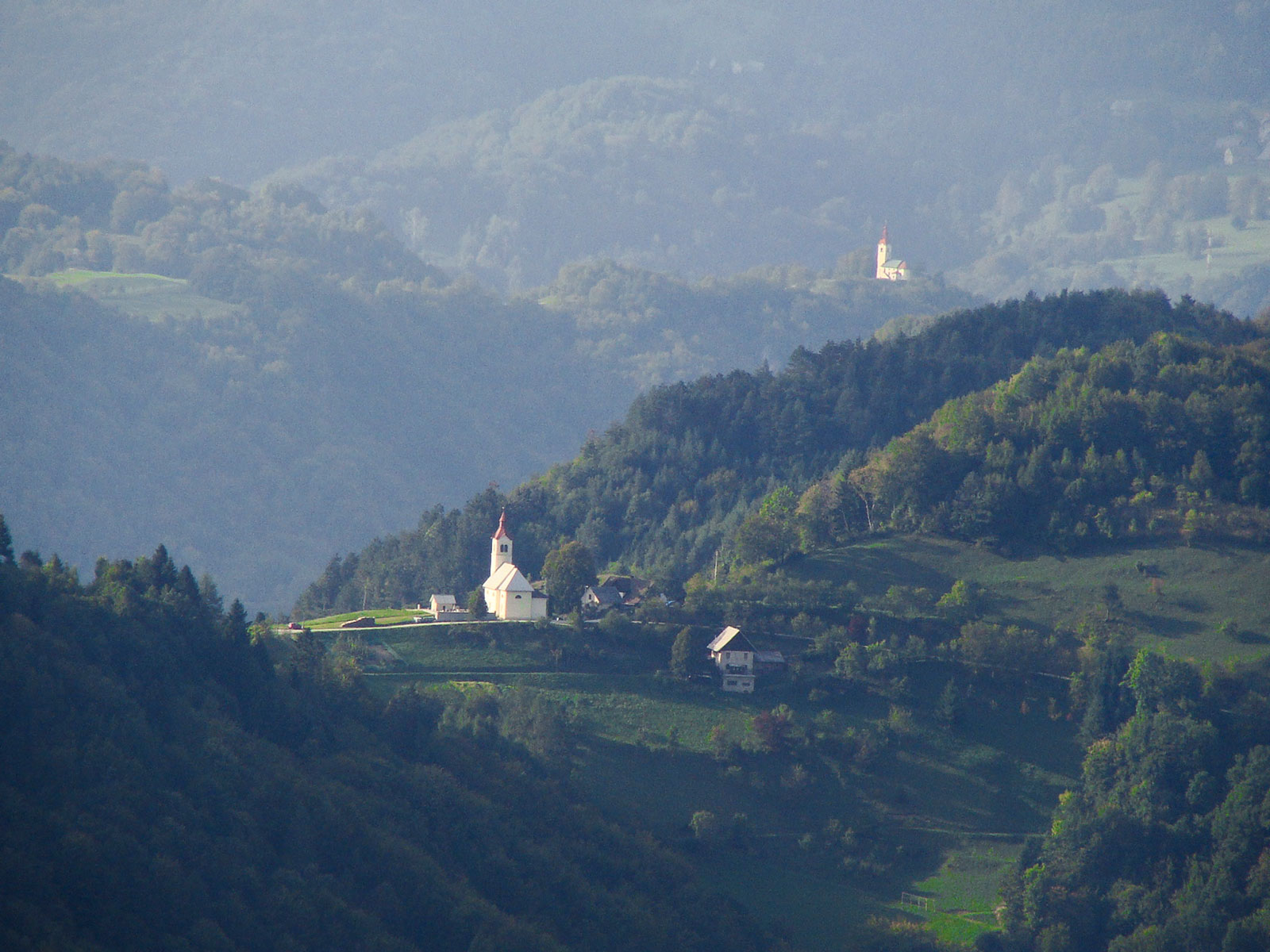THE FAMOUS PENTAGRAM
Ivan Mohorič, a local author, indicated in his book V zvezdi piše vse (Eng. Everything is Written in the Star) that the pentagram appears through our entire history. He lists one example after another from the mysteries of the world still unexplored today. It is an interesting read, but already in advance it opens up more questions than it gives answers.
Whoever walked the villages of the Cerkno region knows that the struggle for the daily bread there was hard in the past. The diverse landscape is the reason for poor and steep roads, which also influenced migration and trade. A special point of interest is definitely the old churches, which can be found in every village. What especially attracts the attention of visitors is that the churches are not placed in the middle of the village as it would be logical, but are in some places right in the middle of fields or meadows far away from houses. What is the reason behind this? The locals say that an image of a saint had been appearing in that spot or that by building the church they merely fulfilled the saint’s wish or that people started building a church elsewhere, but everything fell apart during the night and the building material kept moving to this spot in a miraculous manner. Based on this, we can conclude that the church has to stand precisely in that place. Ivan Mohorič wrote that in connection with others it forms a “divine signature”, which at the same time also stores information about something that is hidden. We can see the signature only by looking at things in a complex manner, but will we also find the hiding place?
The divine signature is thus the pentagram, whose sides are marked by the churches. These churches are:
- the church of St. George in Šebrelje,
- the Church of St. John the Baptist a little bit outside of Šebrelje,
- the Church of St. Ursula in Jagršče,
- the Church of St. Paul in Želin,
- and the spot height 553 at the Roglca summit.
